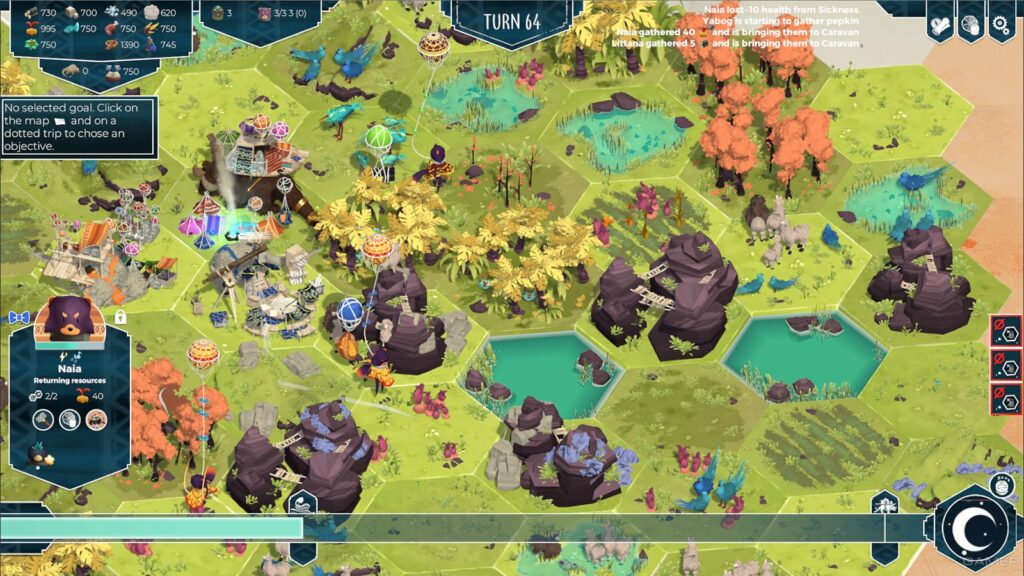As Far As The Eye is a resource-management roguelike in which the player guides a tribe of anthropomorphic animals of diverse shapes that need to travel to the center of the continent to avoid a flood

The game is strongly impregnated on the cultural narratives and practices of the tribe. As the flood is a cyclical natural event, the travel into the center of the continent has become a cultural experience, a sort of pilgrimage. The tribe embodies a tradition of adaptation and respect towards nature, rather than the classical narratives of exploitation and dominance found in resource management games. In that sense, the player is encouraged to only take the necessary resources, and to not deplete any hexagon. Moreover, some resources are protected by auras, supernatural beings which prevent exploitation unless a druid whisper to them to promise no harm. That way, a mystical relation to nature is constantly proposed. At the same time, the mechanics of the travel, like the urge to move from one location to another to avoid the flood and the carrying capacity limits resource accumulation.
Adaptation is also embodied on the members of the tribe, who take different animal forms depending on the task they’re executing. The way in which culture and mysticism embodies the adaptation to a dynamic environment and the respect to it may draw resemblances from some indigenous knowledges about nature. At the same time, the nomadic nature of the tribe may relate to a general trend in city builders, where nomadic ways of life are increasingly present as the imagination around climate change show growingly unliveable environments (The Wandering Village, or Airborne Kingdom, are some examples).
References:
Wired (2021). SimCity wasn’t built for the climate crisis. These games are. https://www.wired.co.uk/article/climate-crisis-city-building-games
Benjamin Abraham and Darshana Jayemanne (2017). Where are all the climate change games? Locating digital games’ response to climate change. Transformations, 30, 74-94. https://opus.lib.uts.edu.au/handle/10453/121664

